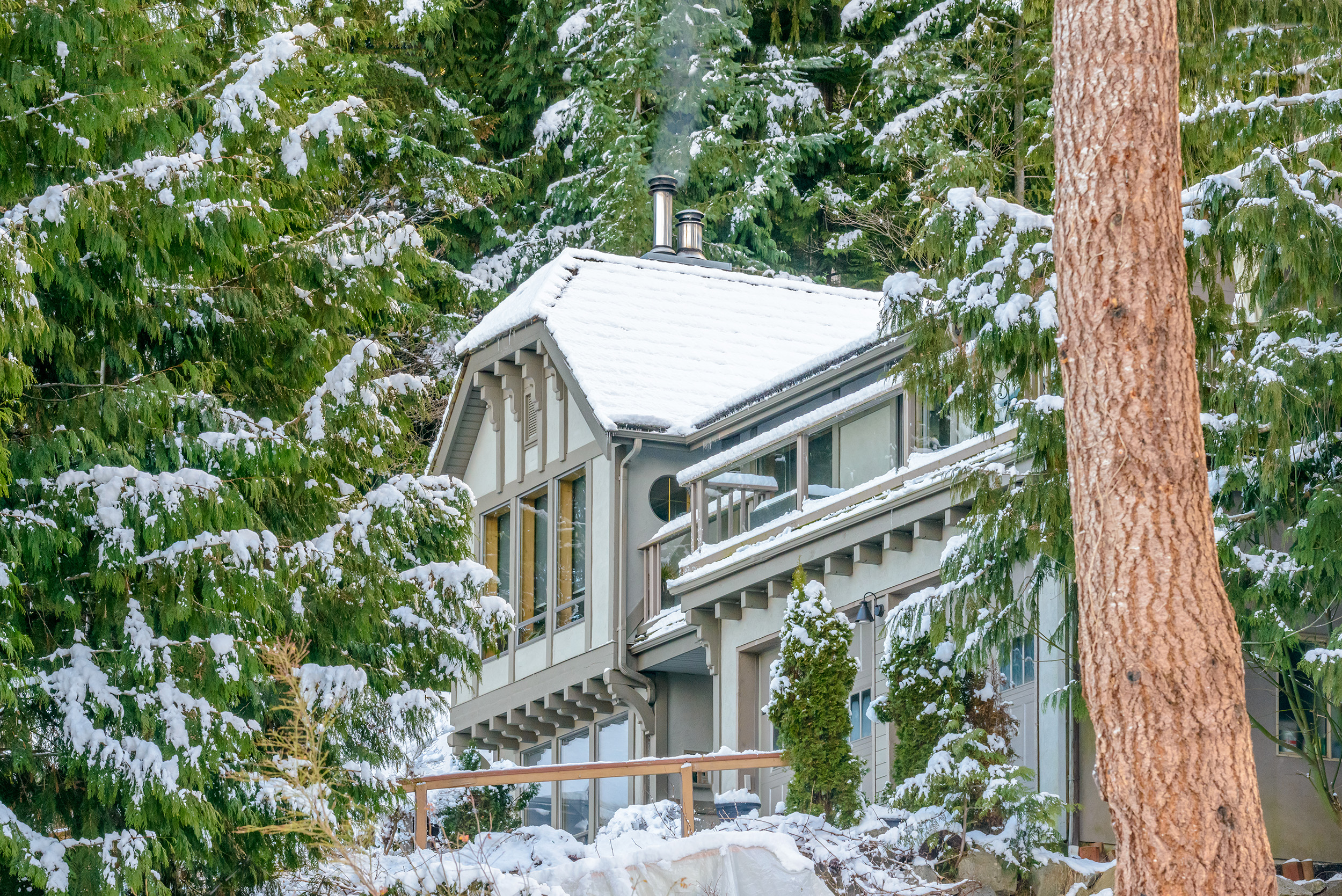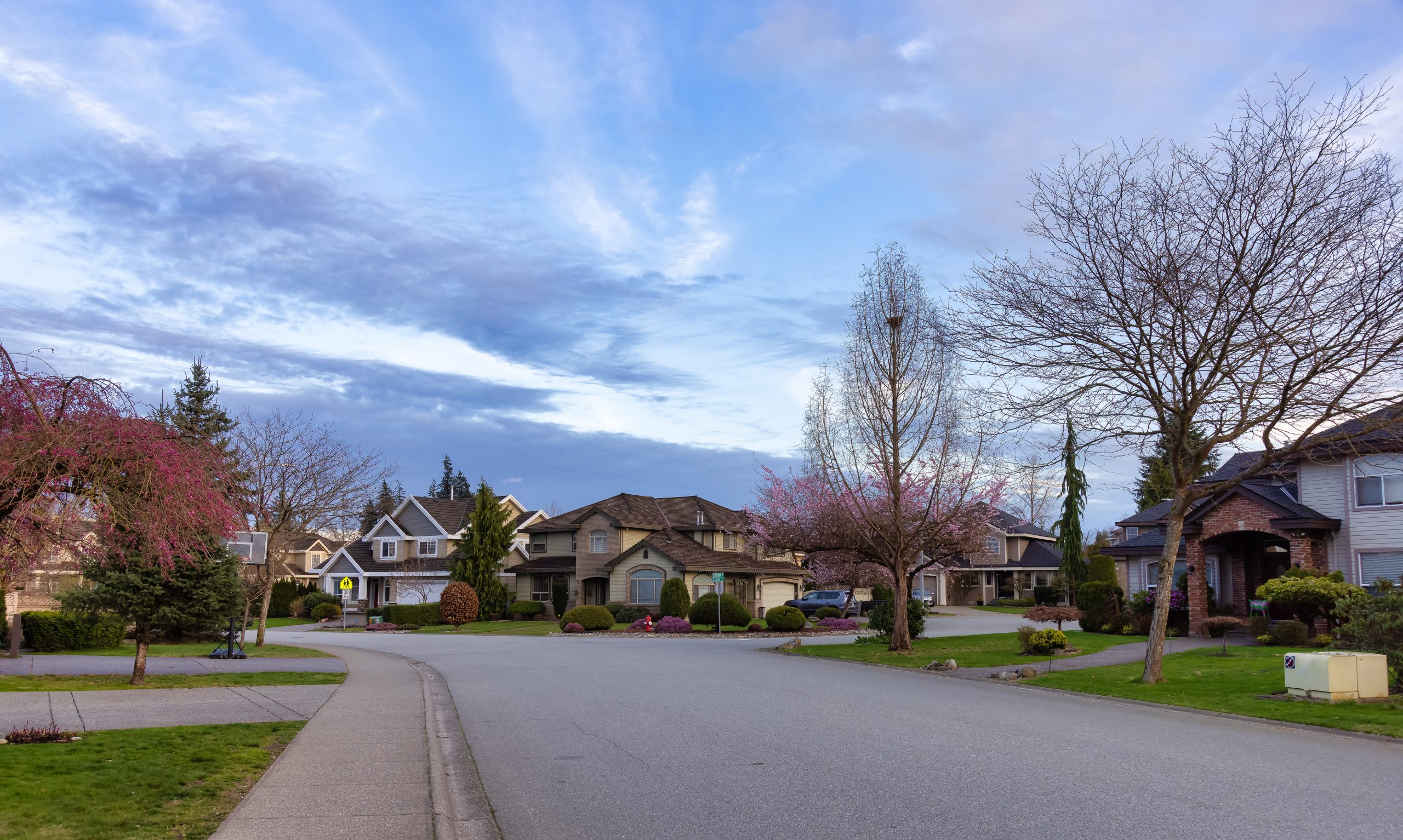Canadian Home Sales Rise Again as Buyers Regain Confidence Ahead of 2026

Sales tick upward, inventory holds steady and confidence returns as Canada’s housing market sets a stable pace heading into 2026
November 17, 2025 – After a brief pause in September, Canada’s housing market resumed its climb in October. National home sales rose 0.9% month over month, marking the sixth gain in the past seven months. The uptick came despite a 1.4% drop in new listings, tightening market conditions. With sales rising and inventory holding steady at 4.4 months of supply, balanced conditions remain the dominant theme heading into the final stretch of 2025.
Steady Demand, Limited Supply
October’s rise in sales confirms what many Coldwell Banker Canada professionals have been observing on the ground: confidence is finally returning.
“We are in a market where stability is setting the tone,” said Karim Kennedy, Chief Executive Officer of Coldwell Banker Canada. “The extremes of the past few years have made Canadians more selective, more informed and more intentional about real estate decisions. That’s not a bad thing. It’s creating space for smarter conversations, and for clients to plan rather than react.”
Even with improved sales activity, prices have remained flat. The national MLS Home Price Index edged up just 0.2% from September, while the average sale price came in at $690,195, down 1.1% compared to October 2024. Regional variation continues to play a key role, with affordable markets in the Prairies and Atlantic Canada seeing small gains while larger markets like Toronto and Vancouver remain steady.
Balanced Conditions Create Space to Act
Buyers are finding themselves in a more predictable environment than they have seen in years. Inventory has stabilized and the pace of sales has returned to pre-COVID levels. Meanwhile, sellers are pricing more realistically, knowing that today’s buyers are well-informed and not in a rush.
“This is a strategy market,” explained Hashim Arthur, Chief Operating Officer of Coldwell Banker Canada. “In this kind of environment, the agents who win are the ones who bring energy and local insight. Sellers need clarity, not hype. And buyers want guidance they can trust. That’s where we’re focusing our leadership.”
The national sales-to-new-listings ratio tightened to 52.2% in October, moving closer to historical norms. With fewer new homes coming to market and demand gradually strengthening, sellers who list before the year ends could benefit from reduced competition and serious buyers eager to transact before 2026.
Government Policy and Market Outlook
The federal government’s 2025 budget included several housing-focused measures, including eliminating the Underused Housing Tax and offering GST relief for first-time buyers. These policies, while still ramping up, are expected to provide modest support to affordability and supply heading into the new year.
The Bank of Canada’s recent rate cuts have pushed borrowing costs to their lowest level since early 2022. With rates now more favourable and additional cuts still possible, experts anticipate continued activity through the winter and into the spring.
“If you’re a buyer who has been on the sidelines, now is the time to get organized and start planning,” noted Arthur. “For sellers, success today is about getting the fundamentals right. When pricing and presentation align, even a balanced market can deliver strong results.”
Looking Ahead
As 2025 winds down, there is a sense of optimism in the real estate community. While economic uncertainty and affordability concerns remain, the fundamentals of housing demand in Canada, including population growth, employment stability, and buyer sentiment, are pointing in the right direction.
“The market is no longer swinging between extremes, and that is a good thing,” added Kennedy. “We‘re entering a phase where thoughtful decisions, good advice and local insight matter more than ever. Our teams are helping Canadians navigate it with confidence and clarity.”
With balance in place and confidence on the rise, the final months of 2025 could lay the foundation for a strong start to the new year.
Is Your Home Ready for Winter? Essential Cold-Weather Prep for Canadian Homeowners

Whether you’re in British Columbia, Alberta, Ontario, or the Maritimes, these winter home maintenance tips can help protect your property, reduce energy bills, and avoid costly repairs.
Winter in Canada isn’t just cold. Between heavy snow, biting wind, and deep freezes, the season can take a toll on your home. But with a little early planning, you can protect your space, your comfort, and your investment until spring arrives.
In fact, a single extreme cold snap in January 2024 caused more than 180 million dollars in insured damage from burst pipes and water leaks. That is a lot of wet basements. Coldwell Banker Canada recommends treating winter prep as an annual ritual, just like taking your boots out of storage and checking if last year’s parka still fits. Think of it as protecting your investment while making your home a cozy retreat from the storm.
Here’s how to winter-proof your home to make sure it stays a warm, efficient haven all season long.
Inspect and Tune Up Your Heating System
Your furnace works overtime in the winter. In fact, it can account for over half of your home’s winter energy use. Schedule a professional furnace check-up to make sure everything is running safely and efficiently. Replace or clean the furnace filter (a dirty filter makes the system struggle) and ensure all heating vents are clear. It’s also a good time to test your thermostat or install a smart thermostat for optimal energy use. And don’t forget safety: test your smoke and carbon monoxide detectors. A bit of prevention now means you’re less likely to face a breakdown, and more likely to enjoy lower heating bills all winter.
Prevent Frozen Pipes and Water Damage
Burst pipes are a winter nightmare that can lead to thousands of dollars in water damage. To keep your pipes intact, start outside: disconnect garden hoses and drain outdoor faucets before the freeze. Shut off exterior water lines if you can. Insulate any exposed pipes in unheated areas like the garage, basement or crawlspace (foam pipe sleeves are cheap insurance). Indoors, keep your home at a consistent warm temperature even when you’re out. If you travel during winter, leave the heat on low and have a trusted neighbour check in periodically. Also, locate your main water shut-off valve now; if a pipe ever does burst, you can quickly turn off the water to minimize damage. These simple steps go a long way toward avoiding the mess and expense of a burst pipe this winter.
Seal Drafts to Save Energy
If your home feels chilly near windows or doors, those drafts are costing you. Sealing gaps and cracks can save up to 25% of your heating energy. Hunt for any cold air sneaking in, then apply weatherstripping or caulking around drafty frames and install door sweeps to seal the bottoms of exterior doors. You can also add plastic window film to older windows (a simple kit can cut heat loss by another 25–30%). Don’t forget to check your attic insulation, too. A well-insulated attic keeps warm air inside and reduces the risk of roof ice problems. Your home will feel cozier, and your furnace won’t have to work as hard to keep you comfortable.
Keep Walkways Clear and Safe
For safety and curb appeal, stay on top of snow and ice. Shovel your driveway, walkways, and steps after every snowfall, and use salt or sand for traction on icy areas. This helps prevent nasty slip-and-fall accidents that cost Canadians millions in claims each winter. Also, clear snow off decks and porches, and knock down any large icicles from eaves. Trim overhanging tree branches that might snap under heavy snow, and keep snow away from furnace exhaust vents and gas meters to avoid hazards. A little diligence with winter chores keeps everyone safe on your property and prevents damage to your home.
Create a Cozy, Inviting Indoor Space
When it’s freezing outside, you want the inside of your home to feel warm and welcoming. Small touches can make a big difference. Lay out plush throw blankets, add area rugs to cold floors, and use warm-toned lighting for a comforting glow. If you have a fireplace, get it cleaned for safety (creosote buildup can cause chimney fires), then enjoy it on chilly evenings. A crackling fire or a well-tuned furnace keeps you comfortable, and it can also impress potential buyers. Winter-ready features like a fireplace, efficient heating system, or updated windows are real selling points that set your home apart in any season.
If you’re showing your home in winter, keep the heat turned up and lights on during viewings so visitors experience a cozy, inviting atmosphere. They’ll be able to picture themselves happily riding out the winter in your home.
Ultimately, all these winter prep steps feed into one goal: protecting your home’s value. Canadian winters can be hard on a property, but a bit of prevention now is far cheaper than an emergency repair later. You’re extending the lifespan of your home’s components, avoiding surprise repair bills, and preserving your property’s market value. And if you’re considering selling, a winter-ready home can truly shine. With fewer listings in the colder months, your property faces less competition. Buyers will immediately notice a home that’s been well cared for despite the weather and feel confident in its condition. Taking winter maintenance seriously means peace of mind now and protecting your investment for the long run.
At Coldwell Banker Canada, we know your home is more than just a house. It’s where your best memories happen, even when it is minus 30 outside. A little planning now can mean a whole lot of comfort later. So prep your home, pour the cocoa and settle in.
Nothing says North of Extraordinary like a Canadian home ready for winter.
A Step in the Right Direction For Housing as Bank of Canada Lowers Rates to 2.25 Percent

What the Second Consecutive Rate Cut Means for Homeowners, Buyers, and Agents
October 29, 2025 – The Bank of Canada lowered its key interest rate by another 25 basis points today, bringing the overnight lending rate to 2.25%. This marks the second cut in as many months as the central bank works to support an economy showing signs of slower growth and rising unemployment.
While the move is welcome news for homeowners with variable-rate mortgages or renewals on the horizon, experts say it may not be enough to spark a major upswing in home sales just yet.
“This is a step in the right direction,” explains Karim Kennedy, CEO of Coldwell Banker Canada. “The cut sends a signal that the Bank of Canada is aware of the pressures Canadians are facing, especially homeowners with renewals coming up in 2026. It provides some breathing room, but it is not a magic wand. Affordability challenges remain, and the market is still adjusting to a new normal.”
The Bank’s latest Monetary Policy Report projects that inflation will stay close to 2%, with growth improving slowly through 2026. The central bank also noted that new United States tariffs are reshaping Canada’s economy and creating added uncertainty for businesses and consumers.
Even so, the rate cut alone may not change the pace of the housing market. According to Rates.ca, a 25 basis point decrease saves about $15 dollars per $100,000 dollars of mortgage in monthly payments. That helps, but it is only a modest improvement.
“For buyers who have been waiting for a sign of stability, this is it,” Kennedy says. “Confidence matters. Even a small rate cut can shift the psychology of the market. It reminds people that borrowing costs have likely peaked, and that can bring some buyers back to the table, especially in balanced or more affordable markets.”
In many parts of the country, prices are down between 10 and 20% from their pandemic highs, but there is still a gap between housing prices and wages. Kennedy points out that for financially ready buyers, this may be an opportunity to act while competition is lower and inventory remains healthy.
What it means for homeowners and sellers
For existing homeowners, today’s cut offers a little relief on variable rate payments and a signal that stability is returning. With approximately 1.8 million mortgages set for renewal in the next 12 months, many households will feel modest rate relief as welcome news.
“For sellers, this is the time to stay patient and strategic,” Kennedy noted. “There is more activity than there was six months ago, but buyers remain careful. Homes that are priced correctly and presented well are selling. The market is moving, just at a steadier pace.”
Realtors across the Coldwell Banker Canada network are also reporting more inquiries from pre-approved buyers who had been waiting for signs that the tide was turning.
Looking ahead
The Bank of Canada has indicated that this level of interest rates may be “about right” for balancing inflation control and economic support. That could mean the next few months bring a pause rather than another immediate cut.
A Guide to Downsizing: How to Simplify Your Space and Keep What Matters

Why a smaller space can mean a simpler, more intentional way of living.
Rethinking What “Home” Means
From coast to coast, more Canadians are choosing homes that reflect their lifestyle and priorities rather than square footage. It’s about how we want to live. As lifestyles change, children move out, or priorities shift toward experiences over possessions, more homeowners are choosing to downsize.
But downsizing isn’t always simple. It often means confronting years of accumulated belongings and the emotions attached to them. It requires both practical organization and a willingness to redefine what truly makes a space feel like home.
At its best, downsizing isn’t about giving things up. It’s about discovering what still feels extraordinary in this next chapter, where home becomes less about space and more about meaning. It’s an opportunity to start fresh, simplify your surroundings, and make room for what adds value, comfort, and peace to your day-to-day life.
Why People Choose to Downsize
The decision to move into a smaller space can be driven by many factors. For some, it’s about financial freedom, reducing expenses, maintenance, and stress. For others, it’s about lifestyle, a shift toward minimalism, travel, or simply having less to manage.
Downsizing can also mark a life transition: retiring, becoming an empty nester, or relocating to be closer to family. Whatever the motivation, the outcome is often the same, a desire to live more intentionally.
Still, the process can feel overwhelming without a plan. Sorting through a lifetime of memories and possessions requires both time and emotional bandwidth.
Approaching it with structure and purpose makes all the difference.
How to Downsize with Confidence
Downsizing is part logistics, part mindset. It’s as much about letting go as it is about moving forward. These six steps can help make the transition more manageable and even rewarding.
- Start early. Downsizing takes longer than most people expect. Begin months in advance to give yourself time to make thoughtful choices instead of rushed ones. A slower pace allows you to reflect on what truly matters and to part with items in a way that feels respectful rather than reactive.
- Start small. Don’t begin with your most sentimental items. Tackle less emotional spaces first, such as a linen closet, laundry room, or guest bathroom. These areas help build confidence before you move on to larger spaces like the living room or primary bedroom. Momentum matters, and starting small keeps you moving forward.
- Keep clutter out. Downsizing is a chance to curate your life, not cram it into a smaller footprint. Focus on bringing only what serves a purpose or brings genuine joy. Avoid duplicates, choose quality over quantity, and picture how each item will fit into your new space. A smaller home should feel lighter, not cramped.
- Skip the “maybe” pile. It’s tempting to hold onto uncertainty, but “maybe” piles quickly become clutter. If you haven’t used something in several months or can’t see a clear place for it in your next home, it’s time to let it go. Donate, gift, or sell items that could add value for someone else.
- Get an outside opinion. Sometimes the hardest part of downsizing is emotional, not practical. Asking a trusted friend or family member to help you make decisions can add perspective and ease. A fresh, objective voice can help you see what’s worth keeping and what’s ready to move on.
- Make every space count. In a smaller home, function and comfort should work together. Choose furnishings that serve multiple purposes, maximize vertical storage, and design each room around how you live. When every area has a clear role, your home feels intentional and calm rather than limited.
The Emotional Side of Letting Go
The hardest part of downsizing often isn’t the physical move. It’s the emotional one. Every object tells a story, from the furniture that filled a first family home to the dishes brought out for every celebration. Letting go can feel like leaving a part of your history behind.
It helps to remember that memories live in moments, not in things. Keeping a few meaningful items, such as photos or heirlooms, can help carry those memories forward. For everything else, focus on the freedom you’re gaining: more time, less clutter, and a renewed sense of control over your space and schedule.
Downsizing isn’t about loss; it’s about clarity. It’s the process of keeping what supports your next chapter and letting go of what no longer does.
Making the Most of Your New Space
Once the move is complete, the real transformation begins. A smaller home invites creativity and the joy of reimagining what home can feel like.
Think vertically with shelving or wall storage. Use natural light to make rooms feel larger. Choose versatile furniture that fits multiple purposes, such as an ottoman with storage or a dining table that doubles as a workspace. Above all, prioritize comfort and function over excess.
The result is a home that feels balanced, manageable, and entirely your own.
A Simpler Life, By Design
Downsizing isn’t about living with less. It’s about living with intention. It’s the freedom to spend less time maintaining and more time doing what you love. It’s a chance to design a life that’s lighter, calmer, and more aligned with your priorities.
Whether you’re planning to move now or just beginning to think about simplifying, the key is to start with purpose. Thoughtful preparation today will make tomorrow’s transition smoother and more rewarding.
At Coldwell Banker Canada, our agents understand that downsizing is a milestone. From planning and preparation to finding the perfect next home, we’re here to guide you every step of the way.
Click here to find an agent in your area.
Canadian Home Sales Ease After Five-Month Climb, But Confidence Remains High

Canada’s housing market finds its rhythm, with steady demand, stable prices, and growing confidence heading into 2026.
After five months of steady gains, Canada’s housing market took a brief pause in September. National home sales slipped 1.7% compared to August, yet activity remained 5.2% above September 2024. It was the strongest September since 2021, a sign that buyer confidence and long-term demand remain steady.
Sales slowed in several major markets, including Vancouver, Calgary, Edmonton, Ottawa, and Montreal, while Toronto and Winnipeg posted gains that helped balance national numbers. After months of strong activity, a brief cooling period is not unexpected.
“This is a healthy recalibration, not a reversal,” said Karim Kennedy, Chief Executive Officer of Coldwell Banker Canada. “We are seeing the market settle into more sustainable patterns. That stability gives both buyers and sellers the confidence to move forward with clarity rather than urgency.”
Balanced Conditions Hold
On the supply side, new listings eased by less than 1% while inventory held steady at 4.4 months of supply, the lowest since January, but still within long-term averages. The national sales-to-new listings ratio remained near 51%, reinforcing balanced conditions across most regions.
“Buyers have more options than they did earlier in the year, and sellers who price correctly are achieving strong outcomes,” explained Hashim Arthur, Chief Operating Officer of Coldwell Banker Canada. “What we are seeing now is a market that rewards good strategy and preparation rather than pure timing.”
There were just under 200,000 homes listed for sale at the end of September, about 7.5% higher than last year and in line with historical norms. The additional supply is giving buyers more space to make informed decisions and reducing the pressure that defined earlier market cycles.
Prices Steady as Market Normalizes
The national MLS Home Price Index was virtually unchanged in September, down only 0.1% from August and 3.4% lower than a year ago. The national average sale price was $676,154, up 0.7% from September 2024.
That small increase reflects a market that has largely found its footing. Higher-priced cities such as Toronto and Vancouver continue to stabilize after deeper corrections, while more affordable regions in the Prairies and Atlantic Canada are showing modest gains.
A Season of Opportunity
The transition from rapid growth to balanced conditions is creating new opportunities for both consumers and the real estate industry. Buyers can now approach the market with less competition, while sellers can plan with more predictability.
“For buyers, this is a chance to make decisions with confidence rather than pressure,” noted Kennedy. “And for sellers, success now depends less on speed and more on how well your home is positioned and marketed.”
For brokers and agents, balance brings a different kind of opportunity. “When the market evens out, relationships matter most,” emphasized Paul Abbott, National Vice President of Franchise Sales for Coldwell Banker Canada. “This is when local expertise, professionalism, and guidance truly stand out. Brokers who invest in supporting their agents and helping them grow are the ones who will build lasting success.”
Looking Ahead
With interest rates stabilizing and consumer confidence improving, the final months of 2025 are expected to remain steady. Pent-up demand continues to surface as Canadians adjust to more normal borrowing conditions and look to make long-delayed moves.
Arthur sees this moment as one of optimism and perspective. “The conversation is shifting from what was lost during the market correction to what is possible now. Buyers, sellers, and agents alike are realizing that a balanced market isn’t a pause in progress. It’s the foundation for the next stage of growth.”
As Canada’s housing market prepares to close out the year, that foundation looks solid. Stability, strategy, and confidence are replacing volatility, setting the stage for a strong start to 2026.
North of Extraordinary Celebrates How Canadians Experience The Feeling of Home

Coldwell Banker Canada, proudly Canadian-owned and community-focused, believes every home has a story worth telling.
You see more than a house. We do too.
Every home tells a story. It’s the corner of the kitchen where the dog bowl lives, the pencil marks on the doorframe that quietly record the years, and the sound of hallway giggles as kids race through the house.
Buying or selling a home isn’t just about square footage or market trends. It’s about protecting those memories while creating space for new ones. For many Canadians, this journey can feel overwhelming. The question at the heart of it all: Who can I trust to guide me through one of life’s biggest transitions?
Whether it’s a first condo in the big city or a family home filled with decades of memories, every move carries both financial weight and deep emotional significance.
Leading the way for consumers is Coldwell Banker Canada, whose 3,000 agents nationwide believe that trust is built through local expertise and a deep understanding of what home truly means. Since 1989, the company has developed a strong network and a reputation for guiding Canadians through the complexities of buying and selling homes, combining national strength with neighbourhood-level insight to create a personal and trusted real estate experience. Today, with a Canada-first approach and Canadian ownership, Coldwell Banker Canada continues to grow while staying deeply connected to the communities it serves and helping Canadians move forward with confidence
“Canadian real estate is not one market, it is dozens of local markets that move differently,” says Karim Kennedy, CEO of Coldwell Banker Canada. “Being Canadian-owned and operated means we are making decisions here, for Canadians, with their realities in mind.”
That distinction matters in an industry where many national brands take their direction from outside the country. Coldwell Banker Canada sees its independence as a way to stay closer to what buyers and sellers actually experience, from navigating changing markets in Toronto to capitalizing on continued demand for properties in smaller towns.
In celebration of their approach to real estate, Coldwell Banker Canada launched North of Extraordinary™, a national platform that asks Canadians to look at home not as a property, but as a place where life happens. At its heart, it aims to capture moments Canadians know well: the scrape of skates on a backyard rink, snow boots drying by the door after the first storm, mismatched chairs pulled to the table for Thanksgiving, or towels hanging on the porch after a summer swim at the lake.
 “The idea behind North of Extraordinary is simple,” explains Shane Supernova, Brand Marketing Manager with Coldwell Banker Canada. “It’s about pausing to appreciate the moments that turn four walls, a roof, and a front door into a home. It’s the laughter, the milestones, even the chaos. Those are the things that make a house extraordinary.”
“The idea behind North of Extraordinary is simple,” explains Shane Supernova, Brand Marketing Manager with Coldwell Banker Canada. “It’s about pausing to appreciate the moments that turn four walls, a roof, and a front door into a home. It’s the laughter, the milestones, even the chaos. Those are the things that make a house extraordinary.”
By focusing on the feelings tied to home, such as belonging, pride, and continuity, the platform reflects a belief that the company says defines its network: that real estate is about people first and the trust that guides them through one of life’s biggest decisions.
“For most people, buying or selling a home is the single biggest decision of their lives,” Hashim Arthur, Chief Operating Officer, Coldwell Banker Canada, explains. “Our role is to make sure they have the guidance and confidence to navigate that with clarity.”
Arthur emphasizes that professionalism and accountability are not optional in today’s market. “Trust is the foundation of real estate,” he notes, “Canadians deserve agents who are accountable, professional, and connected to their communities. That is what we work on every single day.”
That focus on trust has also been recognized by Canadians themselves. Through its Ultimate Service program, Coldwell Banker Canada has earned a 98 percent client satisfaction rating from more than 95,000 Canadian buyers and sellers, a level of satisfaction the company says is unmatched in the industry.
Beyond expertise, he adds, it is the community connection that makes the difference. “When you work with a Coldwell Banker Canada agent, you are working with someone who knows the schools, the parks, the history of the neighbourhood, because they live there too. That local insight is what helps buyers and sellers feel confident they are making the right move.”
This focus on trust is what helps consumers look beyond the noise of market headlines. “The truth is, no two moves are the same. What we can promise is that our agents show up with the expertise, the care, and the resources to help families move forward.”
Coldwell Banker Canada has been steadily expanding its presence, welcoming new brokerages from the Northwest Territories to Atlantic Canada. But Kennedy says growth isn’t about numbers alone.
“For us, growth isn’t about planting more signs in more lawns,” he says. “It’s about building a culture Canadians can rely on. We want brokerages and agents who see real estate as a calling to serve, not just a business to run.”
That approach has helped Coldwell Banker Canada post net positive agent growth at a time when many competitors are contracting. For consumers, it means having access to a network of professionals who combine local expertise with national support.
Behind the scenes, the company’s leadership says it is investing in tools, training, and support to raise the bar for agents and, by extension, the experience of buyers and sellers. But at its core, the message is simple: Coldwell Banker Canada is Canadian-owned, rooted in Canadian communities, and focused on the people who call them home.
“Wherever your next move takes you,” Kennedy says, “Whether it is a first condo, a family home, or a quiet place to start a new chapter, Coldwell Banker Canada is already there, helping Canadians turn houses into homes. That is what North of Extraordinary means.”
Thinking about making your next move?
Connect with your local Coldwell Banker Canada community brokerage here.
What Nearly 50 Years in Real Estate Taught One Broker About the Industry’s Future

William Nelson has spent nearly five decades serving a small Ontario town. His story offers lessons in leadership, legacy, and what truly makes a brokerage last.
In 1979, Bill Nelson joined a small real estate office in Mount Forest, Ontario. Listings arrived once a week in a three-ring binder. Offers were often handwritten and only a page long. Buyers and sellers waited patiently for responses because there was no other option.
Nelson had been introduced to the business a few years earlier, when he purchased a rental building through Brian Padfield, a local broker and business owner. The two struck up a friendship that quickly turned into a partnership. By the time Nelson formally joined the firm, he was already deeply connected to the community and to the values that would define his career.
Eventually, he bought into the company and helped manage both the real estate office and a neighbouring insurance brokerage. He and his partner worked side by side for decades. “We never had a fight,” Nelson shares. “We didn’t always agree, but we respected each other enough to talk it through.”
 The business evolved over time. In 1993, it joined the Coldwell Banker network as Coldwell Banker Padfield Realty and became what is now Coldwell Banker WIN Realty. Though the name changed, the approach never did. The office has remained rooted in the community, offering steady service across market cycles and generational changes.
The business evolved over time. In 1993, it joined the Coldwell Banker network as Coldwell Banker Padfield Realty and became what is now Coldwell Banker WIN Realty. Though the name changed, the approach never did. The office has remained rooted in the community, offering steady service across market cycles and generational changes.
Today, the brokerage is celebrating 50 years of continuous service. Nelson has been there for 46 of them, guiding clients through a business that has grown faster, more complex, and, in some ways, less personal.
“Real estate used to move slowly,” he reflects. “Now it moves so quickly. The challenge is not losing your sense of purpose along the way.”
Then and Now

When Bill Nelson began his career, real estate was a far simpler business. Deals were drafted on typewriters or by hand, often no more than a single page, and agreements were sealed with signatures and handshakes. The work depended on patience, persistence, and trust.
Communication moved at the speed of the postal service. Offers were delivered in person or by fax. Phones rang on desks, not in pockets. And when someone left the office for the day, they were truly unreachable.
“You couldn’t expect an answer right away,” Nelson remembers. “That was just how it worked. You had to wait.”
It was a slower time, but in many ways, a more patient one. Agents met their clients face-to-face. They knocked on doors, followed up in person, and often knew the families behind the front lawns.
Today, real estate moves at a very different pace. Messages arrive by the minute. Clients expect answers within the hour. Listings go live in real time, and the pressure to always be online has crept into every corner of the business.
Nelson resists that pull. He does not advertise his cell phone number. He does not receive work emails on his phone. “It is a tool,” he explains, “not a leash.”
Though the platforms and the pace have changed, his belief in balance has not. In a world of pings, prompts, and notifications, he still makes space for conversations that take time and for decisions that deserve it.
The Value of Experience
The speed of the business is not the only thing that has changed. So has its texture. The rise of new platforms, digital tools, and data-driven marketing has reshaped how properties are promoted and how deals are made.
Nelson pays close attention to those changes. He sees the value in automation and analytics, but believes tools are only as good as the hands that use them.
“These things are helpful,” he admits. “But they are not a replacement for judgment, or for relationships. Real estate is still about people. It always has been.”
What concerns him more than technology is motivation. He has watched the industry attract a growing number of part-time licensees and short-term career seekers. At Coldwell Banker WIN, he screens every new hire through a psychological assessment. The goal is to find individuals with a mindset rooted in service, not just sales.
“If someone is coming in for quick money, they are not the right fit,” he cautions. “I have made that mistake before. I don’t make it anymore.”
For Nelson, real estate is not about keeping up with the flashiest trends. It is about doing the work, building trust, and staying true to the fundamentals.
“Good agents still rise to the top,” he stresses. “They always will.”
Legacy in Motion
 For all the deals closed, contracts negotiated, and economic cycles weathered, the moment that stands out most to Bill Nelson is not about a property. It is about a person.
For all the deals closed, contracts negotiated, and economic cycles weathered, the moment that stands out most to Bill Nelson is not about a property. It is about a person.
Years ago, his son was living in Korea. When he and his wife made the decision to move back to Canada, Nelson kept the news a secret from his own wife for nearly a year. Quietly, he prepared a house for them and set up an office at the brokerage. To keep the surprise intact, he told his wife the home was being rented by an overseas couple.
The reveal came during a family gathering. “My son walked in wearing a custom T-shirt,” Nelson recalls. “My wife looked at him and said, ‘How long are you here for?’ He said, ‘Hopefully forever.’ That was one of the best moments of my life.”
Today, that son is one of Coldwell Banker WIN Realty’s top-performing agents and is preparing to take over the business in the coming years.
It is a story that says a great deal about Nelson. It reflects how he thinks, how he leads, and how seriously he takes responsibility for his family, for his agents, and for the people his brokerage serves. Real estate, for him, is not just a business. It is a long-term commitment built on trust, care, and continuity.
In a profession where agents come and go, and offices can feel interchangeable, Nelson’s story is a reminder that some brokerages still see clients as neighbours, and legacy as something worth planning for.
Wisdom Shared
Nelson has experienced both economic booms and historic downturns. He sold homes when mortgage rates hit nearly 22 percent. He kept his business stable through the financial crisis, through the housing frenzy of 2020, and through the regulatory shifts that followed.
He is not interested in chasing volume or playing to trends. He is interested in building something that will last.
“I’m not working for me anymore,” he points out. “I’m not even working for my kids. I’m working for my grandchildren. Their world is much more difficult than mine was, and I want to leave them something solid.”
His advice for young agents is simple.
Learn the history. Study the rules. Remember that you are representing people, not just properties. If you focus on doing the right thing, even when it is not the easy thing, you will build a reputation that stands.
What Lies Ahead
Nelson believes the industry is heading toward another period of adjustment. As baby boomers age, housing inventory will increase, but not always in places where buyers want to live. At the same time, he expects regulatory bodies will raise the bar for licensing and accountability.
“There are too many people with too little training,” he says. “We need to fix that.”
At Coldwell Banker WIN Realty, he continues to mentor his team, troubleshoot complex deals, and advocate for collaboration over competition. His approach is not flashy, but it works.
“In the end, this is a people business,” he reminds us. “You don’t need to be everywhere. You just need to be the one they trust.”
Bill Nelson is the Broker of Record at Coldwell Banker WIN Realty in Mount Forest, Ontario, with more than 46 years of experience in real estate and deep ties to his community. He holds multiple professional designations and has served in leadership roles across business, healthcare, housing, and civic organizations. Named Mount Forest’s Citizen of the Year in 2015, Bill is widely recognized for his integrity, commitment, and people-first approach. Under his leadership, Coldwell Banker WIN Realty was honoured with Mount Forest’s Corporate Citizen of the Year Award in 2022, the same year he was named Canadian Ambassador by Coldwell Banker Canada. In 2024, Bill was awarded the King Charles III Coronation Medal in recognition of his significant contributions to the community.
Coldwell Banker Canada Lights Up Gen Blue 2025 at the Fontainebleau, Las Vegas

There’s nothing quite like the magic of Gen Blue, and this year at the fabulous Fontainebleau Las Vegas, Coldwell Banker Canada proudly kicked things off in unforgettable style. From our Canada Day celebration to two action-packed days of learning, networking, and innovation, Gen Blue 2025 reminded us why the Coldwell Banker® network continues to lead with vision, collaboration, and heart.
Canada Day Kick-Off: North of Extraordinary
Our Canadian delegation, more than 50 strong, set the tone for Gen Blue with a vibrant Canada Kick-Off session that was equal parts business, inspiration, and connection.
The highlight was the official unveiling of North of Extraordinary, Coldwell Banker Canada’s new national brand platform. The campaign reflects what makes our presence distinctly Canadian: rooted in place, driven by purpose, and connected to people. It celebrates the idea that real estate is about the stories, traditions, and milestones that turn a house into a home.
North of Extraordinary is a rallying cry for our network. It speaks to buyers and sellers who want trusted guidance, to brokers who want a brand with legacy and momentum, and to agents who seek a community built on leadership and meaning. In short, it tells the world that Canadian real estate deserves to be seen differently, and that our network is here to deliver it.
We were also joined by the Coldwell Banker/Anywhere team, who highlighted the powerful new referral network platform and other tools that Canadian agents can now leverage across our global system.
Eric Smith, Pat O’Rourke, and Wade Adams reminded us to get “back to basics”, where the keys to growth are consistency and staying true to what feels natural. Adding to the momentum, Kanini Ching, our newly crowned Coldwell Banker AI Innovator Award Winner, shared practical AI prompts and strategies that transcend borders and elevate real estate success.
Breakout sessions led by Brett Matsuura turned into collaborative think tanks, sparking new ideas and strategies. And when David Marine took the stage to share the art of storytelling, he had us all leaning in, proof that connection is the heart of our business.
The evening closed in the marketplace with a toast to new global friendships, the deepening of existing relationships, and a sense of excitement for what was to come.
Day 2: Inspiration at Scale
With 2,500 attendees in the room, the energy reached new heights.
- Key takeaways included:
- A powerful market update and vision for the future from Jason Waugh, CEO of Coldwell Banker.
- The launch of the Inspired Living Initiative, including Land & Ranch, Water Properties, Urban Living, Sports & Entertainment.
- The debut of Live Well with Coldwell
- An inspiring panel led by Kamini Lane, spotlighting agents who are “All In.”
- Recognition of this year’s Coldwell Banker Nomination Award winners, including heartfelt moments like Mary Williams’ $1M donation to St. Jude.
- A thought-provoking keynote by world-renowned photographer Platon, reminding us that empathy and authenticity lie at the core of real estate.
- And of course, the Marketplace buzzed with creativity, from the Image Lab and Social Media Content Lab to a puppy-filled recharge station.
- Bold Moves, Big Ideas, breakout session with our 30 under 30 Canadian winner Shelby Vincent from Coldwell Banker Local, Regina, Saskatchewan
Day 3: Going ALL IN
The final day proved why Gen Blue is the most anticipated event of our network.
Sessions were laser-focused on helping agents thrive, including deep dives into social media, policy impacts on real estate, and luxury growth strategies. Canadian agents contributed to breakout sessions on multiple panels throughout the day. AI continued to dominate the conversation with standing-room-only sessions, including the ChatGPT Masterclass and the much-anticipated AI Innovator of the Year showcase.
Congratulations again to Kanani Ching, whose cutting-edge digital avatar presentation showed exactly how technology can power agents to the top of their markets.
The day wrapped with the Marketing Summit, fuelling brand strategies for 2025, and the unforgettable Gen Blue Party at LIV, a high-energy celebration of connection, collaboration, and community.
Thank You
Gen Blue 2025 was extraordinary because of you, our incredible network of agents, brokers, managers, and staff. Together, we continue to push boundaries, embrace innovation, and create opportunities that are truly North of Extraordinary.
Until 2027, let’s carry the Gen Blue spirit back to our markets, our teams, and our clients and Live Well with Coldwell.
Canadian Home Sales Climb for Fifth Straight Month as Market Momentum Builds

Canada’s housing market finds its footing with five straight months of sales growth, rising inventory, stable prices, and cautious optimism for the fall
The Canadian housing market continued its late spring rebound through August, with national home sales rising 1.1% compared to July. This marks the fifth straight month of increasing activity and adds up to a 12.5% gain in transactions since the slowdown in March. August also delivered the strongest sales result for this time of year since 2021. Compared to last year, actual sales were up 1.9%, showing a modest improvement over August 2024.
Sales Up Nationally, Led by Montreal and Vancouver
According to the Canadian Real Estate Association, much of the growth came from Montreal, Greater Vancouver, and Ottawa. These gains were enough to offset a small decline in the Greater Toronto Area. Toronto has been the main driver of national sales increases for much of the year, so a brief pause is not unexpected. The encouraging sign is that other major cities are now picking up steam.
“This five-month upswing in sales is giving buyers and sellers new confidence heading into the fall,” noted Karim Kennedy, Chief Executive Officer of Coldwell Banker Canada. “We are seeing strong momentum in markets like Montreal and Vancouver, showing that the recovery isn’t limited to one region. Canadians are adjusting to the current interest rate environment, and our Coldwell Banker agents are helping clients navigate these opportunities with confidence.”
Overall, activity has been steadily gaining strength since the spring. Many buyers who had been waiting on the sidelines during the quieter winter and early spring are gradually returning to the market.
More Sellers Return as New Listings Rise
Sellers have responded to the uptick in sales by listing more homes. Nearly 76,000 properties came onto the market in August, a 2.6% increase from July and about 6% higher than a year ago. Because new supply rose faster than sales, the sales-to-new-listings ratio eased slightly to 51.2% compared to 52% in July.
That ratio means roughly half of all new listings are selling, a sign of balanced conditions. Buyers have more choice than they did in the spring, while demand remains strong enough to keep pace.
Inventory Lowest Since January, Yet Balanced
At the end of August, Canada had 4.4 months of inventory on the market. That is the lowest level since January, but still within normal ranges for this time of year.
“Even with inventory at its lowest level in months, there’s still enough supply to keep the market healthy and avoid runaway price pressure,” observed Hashim Arthur, Chief Operating Officer of Coldwell Banker Canada. “Conditions are balanced, which is a good place to be. Buyers have more selection than they did earlier in the year, and sellers who price their homes appropriately are still finding strong interest.”
In total, there were about 195,000 properties listed for sale across the country at the end of August. That is almost 9% higher than a year ago and is in line with historical norms for this time of year. The overall supply picture has returned to a more typical state after years of tight conditions, which has prevented the extreme seller’s markets seen in the past.
Home Prices Holding Steady
Despite rising sales, prices have been largely flat. The MLS Home Price Index, which measures the benchmark value of a typical home, slipped by just 0.1% from July. It remains about 3.4% lower than last August, reflecting the declines seen in late 2024 and early 2025 when the market adjusted to higher borrowing costs.
Since April, however, prices have held steady. The national average sale price in August was about $664,000, up 1.8% compared to August 2024. That was the first annual increase in several months and suggests that values are stabilizing, with modest gains showing up in some regions. Year-over-year comparisons are expected to keep improving this fall as the market moves past last year’s lows.
Price patterns vary by region. Higher-priced markets such as Toronto and Vancouver went through deeper corrections last year and are now stabilizing. More affordable markets are beginning to see small increases as activity picks up. The overall message is that prices are no longer falling, but they are not surging either. Buyers are not facing the rapid increases seen during the pandemic, while sellers are generally not under pressure to discount heavily.
What to Watch This Fall
As summer wraps up, attention turns to the fall market, which is traditionally one of the busiest times of the year. Two factors will be key. The first is the surge in new listings after Labour Day, which has already begun. The second is the Bank of Canada’s next interest rate decision. Even a modest rate cut could bring more buyers back into the market.
“We anticipate that if borrowing costs ease even slightly, it will encourage a wave of buyers who have been waiting for a better entry point,” Arthur explained. “Our agents are already seeing more inquiries from clients who are watching mortgage rates closely. With additional listings coming on and a possible rate adjustment ahead, the fall could be a very active season. Buyers who are ready with financing in place will be in a strong position to act quickly when they see the right home.”
Kennedy added, “A balanced market is good news. Buyers have more choice, sellers have realistic expectations, and transactions are happening at a healthy pace. As we head into the fall, preparation and timing will be key. Those who are ready to move will be best positioned to take advantage of opportunities as they arise.”
Trust in Canadian Real Estate

Why recent failures are a wake-up call for consumers, agents, and brokerages to demand higher standards.
In recent months, a few situations have reminded Canadians how fragile trust in real estate can be. In one instance, a large brokerage closed suddenly after serious issues were discovered in the handling of client deposits. In another, allegations of financial misconduct by a licensed professional raised questions about how problems could go unnoticed inside a long-established office.
These examples are reminders that when oversight or culture falls short, the effects reach far beyond a single transaction. Clients begin to question whether their investments are safe, and professionals across the industry are left to defend the reputation of the profession as a whole.
What Went Wrong
Oversight in real estate is meant to serve two purposes: to protect consumers and to hold professionals accountable. Yet when financial controls are weak or regulators are slow to act, the system fails on both counts. In recent cases, serious problems went undetected until they had already caused significant harm, raising doubts about how closely trust accounts are monitored and how quickly red flags are investigated.
Regulation, on its own, is not enough. Rules and policies only matter if they are enforced with consistency and urgency. Too often, the focus falls on minor technicalities while larger risks go unchecked. When that happens, clients are left vulnerable, and agents who are doing their jobs with integrity find their reputations undermined by the failures of others.
These lapses are not just administrative shortcomings. They weaken the bond of trust that real estate depends on, and they point to the need for stronger oversight combined with a culture that demands higher standards every day.
Trust as the Cornerstone
Buying or selling a home is one of the most important decisions of a lifetime. It depends entirely on trust. Clients must know that their Realtor is acting with integrity, just as Realtors expect honesty from their clients.
Consumers should demand financial accountability. In most provinces, deposits are held in a brokerage’s trust account. Recent events show why it is fair to ask exactly how those accounts are managed, how often they are reconciled, and what protections exist if funds are misused. A reputable brokerage will have a clear answer and will not hesitate to share it.
Professionalism is equally important. Clients should expect their Realtor to act with honesty and fairness, to disclose conflicts, and to put the client’s interests first. If something feels wrong, consumers are right to walk away.
Finally, consumers must look beyond the individual agent to the company behind them. A strong agent in a weak system can still end up caught in disaster. Research the brokerage name on the contract. Ask about its training, compliance, and track record. The right brokerage sets the tone for ethical conduct.
What Agents Should Prioritize
It’s not only consumers who are re-evaluating their choices. Real estate agents themselves have been given much to think about. For many, the sudden closure of a brokerage can be career-altering, leaving agents to scramble to find new homes for their businesses overnight, all while reassuring clients that those clients’ deposits and deals were still safe. The lesson is painfully clear: an agent’s choice of brokerage can either underpin their success or undermine it catastrophically.
Choosing a brokerage based on splits or low fees alone is a short-sighted decision. A rock bottom desk fee means little if the firm cannot protect your clients or your own livelihood.
Agents should ask harder questions. Does the brokerage have strong oversight of trust accounts? How does it respond to misconduct? What kind of mentorship and training does it provide? What is the broker-owner’s reputation in the community?
Culture is critical. A brokerage should promote integrity, discipline those who fall short, and support agents who choose to do the right thing even when it is hard. It should also be prepared for a crisis. When challenges arise, the response must be swift and principled. Clients and agents alike need to see that integrity matters more than convenience, and that the organization will always put trust and accountability ahead of affiliation.
At the end of the day, every Realtor’s career depends on public trust. By choosing brokerages that prioritize ethics and accountability, agents protect their clients and themselves while strengthening the industry’s collective reputation.
The Brokerage Burden
These situations also shine a spotlight on the responsibility of brokerages. Real estate brokerages are more than just administrative hubs; they are the first line of defence for consumer protection. A brokerage accepts deposit cheques, holds them in trust, supervises transactions, and mentors agents on proper practices. When a brokerage fails at these duties, whether through negligence or malfeasance, the consequences can be devastating, as we’ve seen. That’s why broker-owners must view integrity and transparency not as abstract ideals, but as daily operational imperatives.
Proactive oversight is the starting point. Brokerages should conduct frequent reconciliations of trust accounts and invite third-party review. Some in the industry have called for monthly reporting and mandatory external audits. Brokerages that value transparency will welcome these measures.
Equally important is setting a culture of ethics. Leaders must encourage staff to speak up, protect those who do, and take decisive action when misconduct is uncovered. Trust grows when everyone in the organization knows that integrity is non-negotiable.
A Call to Higher Standards
There is an opportunity when such situations happen. Trust, once broken, can be rebuilt, but it demands action from every part of the profession. Regulators must enforce the rules with speed and strength. Industry associations must continue pressing for consumer protections. Brokerages must go beyond the minimum standard to ensure deposits and deals are safe. Agents must align themselves with firms that share their values. Consumers must keep asking smart questions and expect clear answers.
Most Realtors are already living up to that standard. They are honest, hardworking, and as frustrated as the public when scandals make headlines. Each time an agent goes the extra mile for a client, or a brokerage chooses transparency over convenience, trust is restored a little more.
This is a pivotal moment. We can allow these failures to define us, or we can use them to demand better of ourselves. The choice is ours. Agents must demand higher standards. Clients deserve them. And the future of Canadian real estate depends on them.
Rob Goodings is Vice President of Account Management at Coldwell Banker Canada, where he guides franchise development and helps grow the brand’s presence in new markets. Since joining the company in 2005, he has built a career that spans marketing, learning, and affiliate services, giving him both a deep knowledge of the business and close connections across the network. Rob’s focus is on supporting broker-owners, strengthening relationships, and ensuring the Coldwell Banker brand continues to deliver long-term value across Canada.


 Facebook
Facebook
 X
X
 Pinterest
Pinterest
 Copy Link
Copy Link
